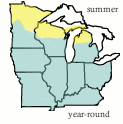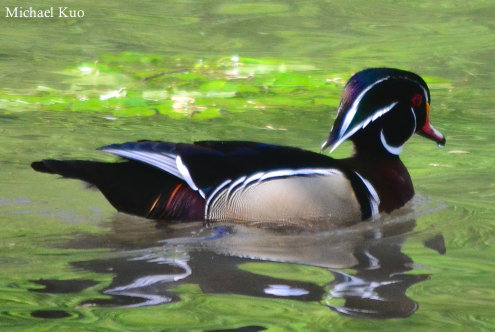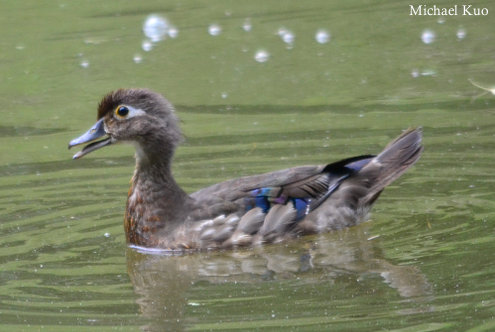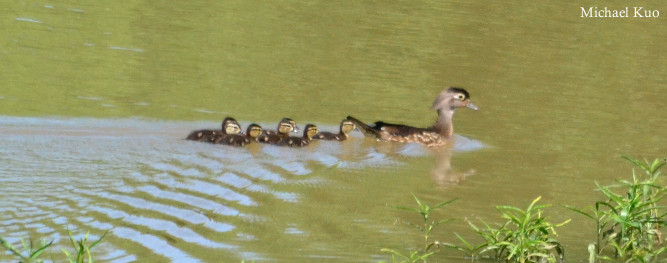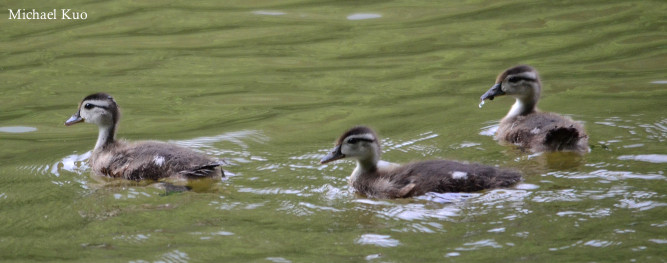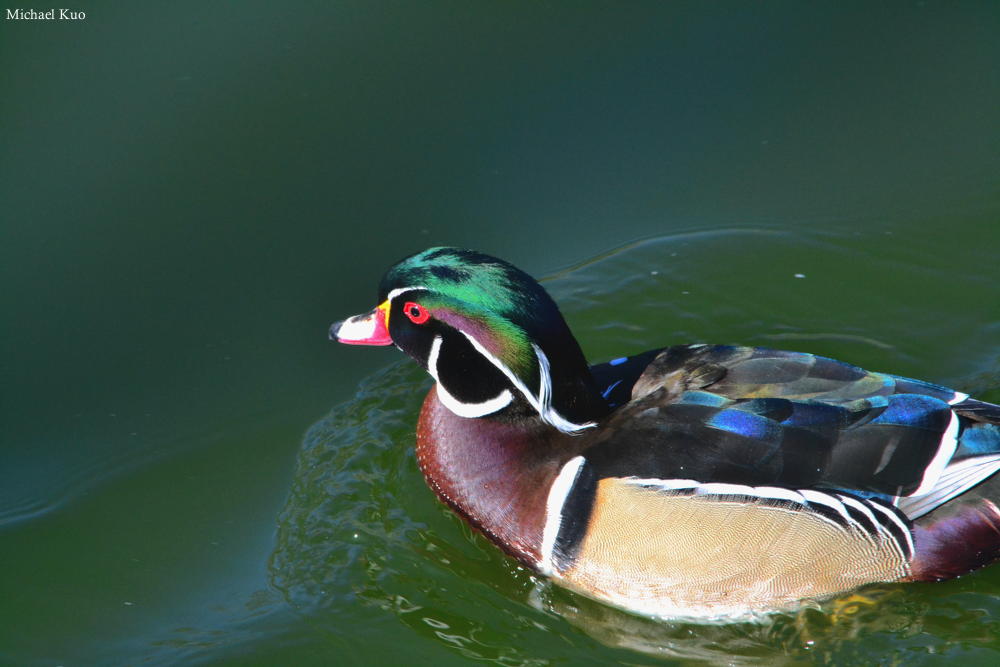 Aix sponsa (wood duck) |

|
|
A few years ago, we stumbled upon a female wood duck at the edge of a pond. We were trying to get a closer look at mushrooms growing on dead willow branches overhanging the pond—when in a sudden explosion of wingbeats and splashes, a duck hurled itself backwards across the water. It flapped one wing almost uselessly, in and out of the water, and propelled itself away from us, almost upside-down, with its other wing and its feet, making an incredible racket. We moved to another spot to get a clearer view of the injured duck, then found we had to move again to see it. From our new vantage point we could also see the willow branches more clearly and, under them, a handful of virtually motionless ducklings. She was not injured at all, we realized; she had successfully lured us away from her young! Aix sponsa is a small but gorgeous duck found throughout the Midwest—usually seen by casual birdwatchers in spring or early summer. They have crests on the backs of their heads; the breeding male has striking and distinctive colors, while females are not as colorful but are still easily recognized by the white patch around their eyes. Because we promised to discuss edibility at this site "when we have actually tried eating whatever it is," we feel obligated to mention that we have tried wood duck and found it delicious (neither of us could ever enjoy hunting, but family members shot, dressed, and baked wood ducks for us on one occasion). That said, we hope you don't kill wood ducks (or any animals) unless you are starving and must out of necessity—which, frankly, seems pretty unlikely if you're reading this. Besides, it's much more fun to "hunt" ducks with a camera! |
|
|
|
|
|
|
|
|
|
|
|
|
|
|
References: Peterson 1980, Hepp, G. & F. C. Bellrose (2013) in Rodewald 2017, Sibley 2014, Retter 2017. Kuo, Michael & Melissa Kuo (August, 2017). Aix sponsa (wood duck). Retrieved from the midwestnaturalist.com website: www.midwestnaturalist.com/aix_sponsa.html All text and images © , midwestnaturalist.com. |
